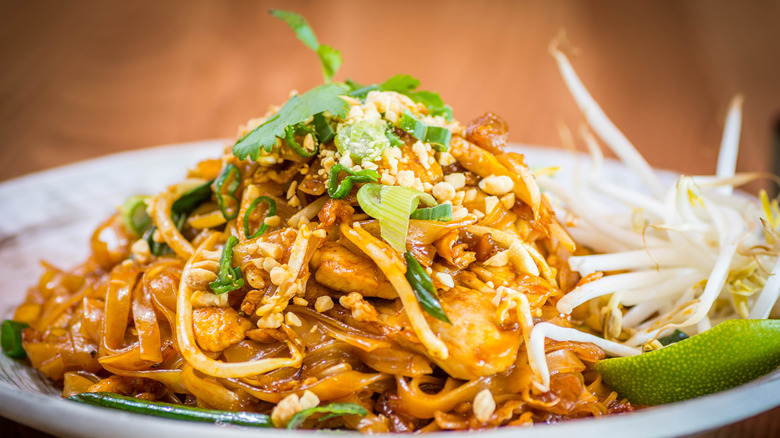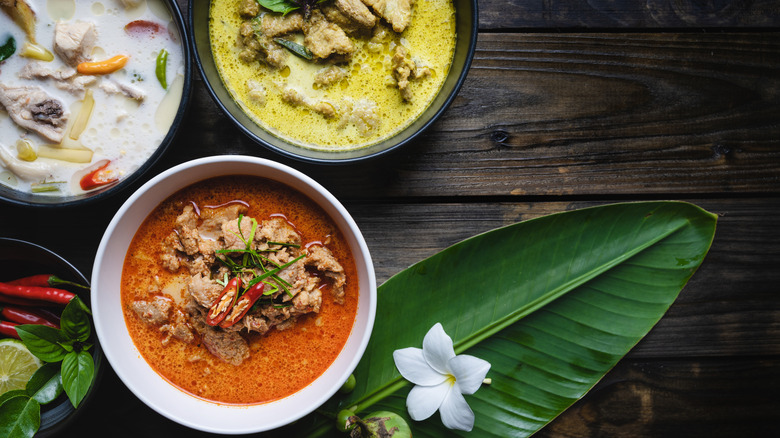Why Are Thai Menus So Similar To One Another?
If it feels like one day you went to sleep completely unaware of Thai food, only to wake up to everyone in your office talking about the newest Thai restaurant in town, you aren't crazy. The explosion of Thai food in the United States and around the globe seemed to be an overnight sensation, and it's not an accident. Each new Thai restaurant seemed to have the same menu. Pad Thai? Check. Pad Se Ew? Check. Chicken Satay? Check. And all at the same price point. This homogeneity was not a freak coincidence but rather by design. But by who?
Have you ever heard of Gastrodiplomacy? Well, gastrodiplomacy, also known as culinary diplomacy, is a term first used in The Economist in 2002 to explain the emergence of Thai food everywhere as a tool to gain international influence. The Thai government believed that the best way to create a positive global perception of their country, increase tourism, make it easier to import food from Thailand, and help Thai cooks gain jobs was through their food (via Foreign Policy).
So, in 2002, the Thai government officially launched the Global Thai Program, which, according to Food & Wine, served as a diplomatic initiative to increase Thai restaurants globally. The Thai Select program further bolstered this initiative, which was later introduced in 2006. This government-funded certification program aimed to streamline the Thai food being served in restaurants in the United States and hold them all to a standard of quality and authenticity.
It's not déjà vu
Through the Thai Select program, Thailand's Department of Export Promotion created three different types of restaurants restauranteurs could fall into. Golden Leaf is a classical high-end Thai restaurant, with menu prices averaging $25-30 per person. Cool Basil is a middle-of-the-road Thai restaurant, with prices averaging at $15-25 a person, and Elephant Jump is essentially fast-food, at $5-10 a person.
It makes sense now! There is a legitimate reason why so many Thai restaurant menus are strikingly similar no matter where you are. It's not in your head (in case you were worried about that). The Thai Select program laid out a road map of best practices to keep their standing while giving the restaurants much-needed resources.
At first, it may seem confusing why a country would invest so much time, money, and resources into sharing its cuisine worldwide. But the results speak for themselves. Today, there are over 5,000 Thai restaurants in America, and foods like Pad thai and peanut sauce have become staples for many. Of course, those foods are just scratching the surface of Thai food, and some argue that this oversimplification and standardization of Thai food has done more harm than good for accepting authentic Thai food. But there is no denying that these initiatives opened up people's minds and hearts to Thailand and it's culture. Thailand's government realized food is the way to the heart, mind, and soul.

